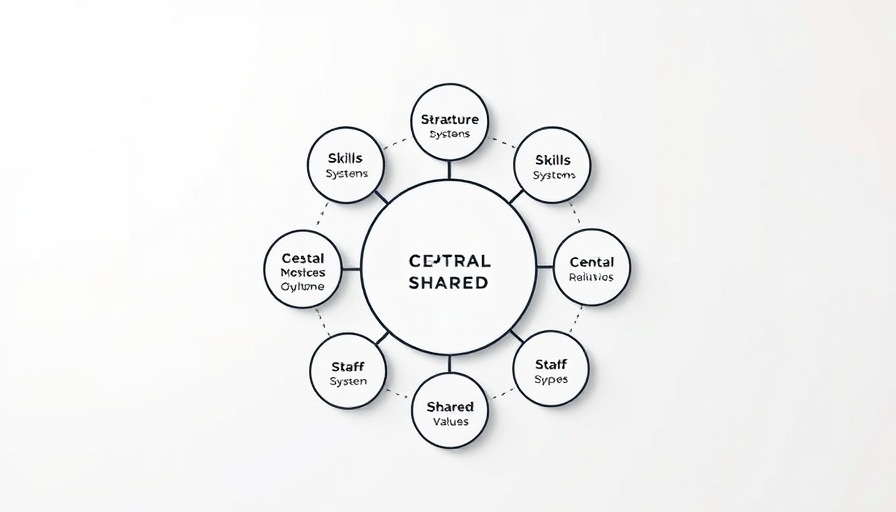
Unlocking the Potential of the McKinsey 7S Model in Marketing
In the ever-evolving landscape of digital marketing, growth hackers and tech innovators are continually seeking frameworks that can streamline their organizational effectiveness. The McKinsey 7S model—developed by Tom Peters and Robert Waterman in the 1970s—serves as a valuable toolkit for evaluating an organization’s marketing strategies and operational effectiveness. It provides insight into how various elements within an organization can work synergistically to enhance performance.
Understanding the 7S Components: A Closer Look
The McKinsey 7S model consists of seven interrelated elements: Strategy, Structure, Systems, Staff, Skills, Style, and Shared Values. Understanding these components is crucial for digital marketers as they navigate complex marketing landscapes. Let’s break it down:
1. Strategy: Crafting a Clear Path
At the helm of any successful marketing campaign lies a well-defined strategy. Strategy refers to the overarching approach an organization employs to meet its goals. Digital marketers must ensure that their strategic goals align with their marketing efforts, fostering a consistent message across all platforms.
2. Structure: Designing a Cohesive Framework
The structure pertains to how resources and teams are organized. For marketers, a clear structure can facilitate better collaboration between departments, ensuring cohesive marketing messaging and optimizing campaign execution. Understanding which teams operate under which objectives can save time and eliminate redundancies.
3. Systems: The Backbone of Operations
Systems refer to the processes and technologies that support operations. An effective marketing automation system, for instance, enables targeted campaigns and data analysis, promoting efficiency. Marketers should assess their technological infrastructure to ensure it supports their marketing strategies.
4. Staff: Harnessing Human Capital
Staff represents the human element within organizations. Digital marketers need to evaluate whether they have the right talent to execute their strategies effectively. Understanding the skills and personalities of team members can aid in better task allocation, leading to enhanced productivity.
5. Skills: Capabilities that Drive Success
Skills are critical in determining how effectively staff can execute marketing campaigns. Continuous training and professional development can boost team capabilities, ensuring they stay abreast of industry trends and technological advancements.
6. Style: Shaping Organizational Culture
The style refers to the management style and company culture. Marketers should foster an open culture where innovation and creativity thrive, allowing ideas to flourish. A supportive environment can inspire team members to contribute more effectively to campaigns.
7. Shared Values: The Core of Existence
Lastly, shared values encapsulate the mission and vision of the organization. A strong alignment between organizational values and marketing efforts can enhance brand integrity and customer loyalty. Marketers should ensure that their strategies echo these core values, creating a genuine connection with target audiences.
Future-Proofing Marketing Strategies
Given the rapid technological advancements and shifts in consumer expectations, the McKinsey 7S model is not just a static tool but a dynamic framework. By continuously assessing the elements of the 7S model, organizations can pivot their marketing strategies to meet changing market conditions. This proactive approach allows for innovations in how marketing strategies are employed, ultimately driving performance and market success.
Conclusion
For growth hackers, digital marketers, and AI innovators, the McKinsey 7S model provides a comprehensive view of an organization’s capabilities. By leveraging this structured approach, firms can identify areas for improvement and implement strategic realignments, ensuring they remain competitive in an innovative digital era.
 Add Row
Add Row  Add
Add 




Write A Comment